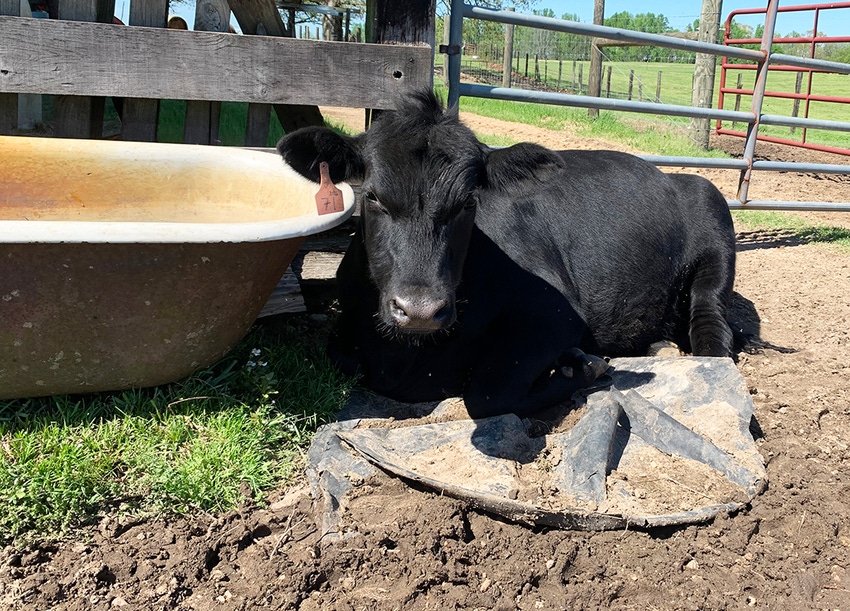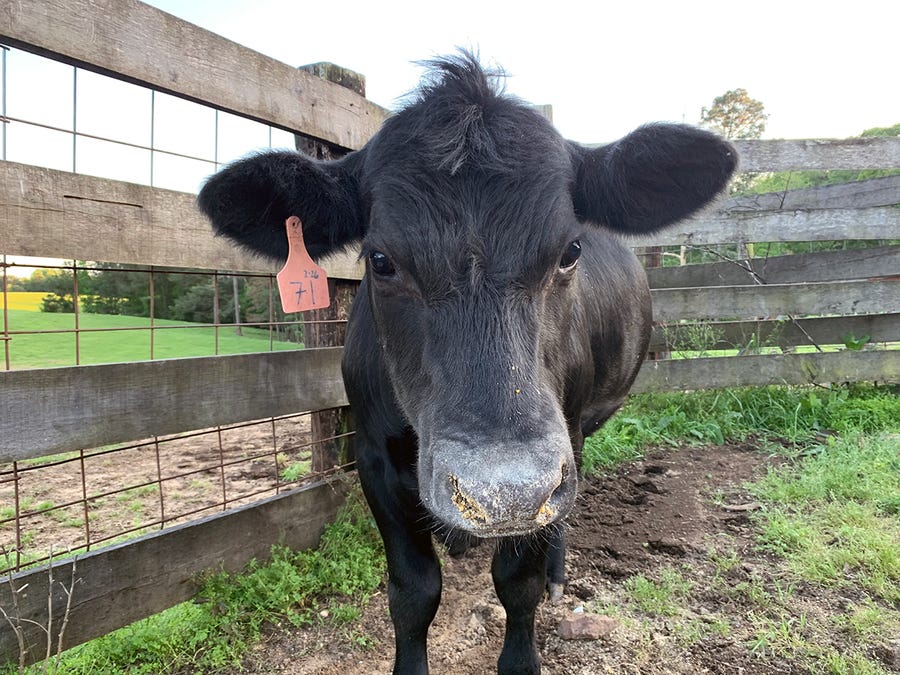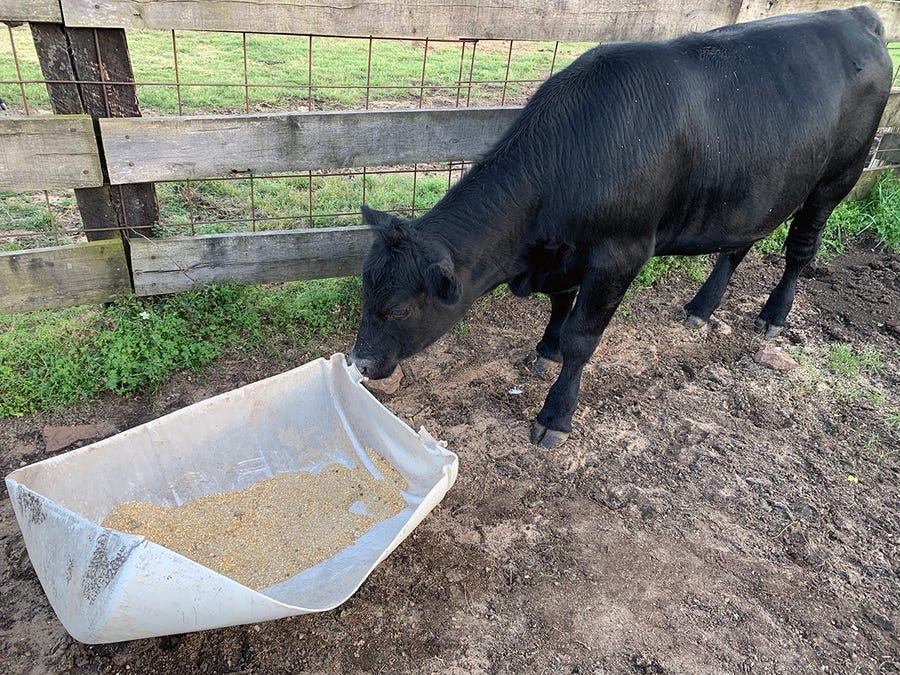
He might be the only feeder steer in the history of Alabama feeder steers (or any other Southern male) that refuses corn. Shiny, slim and trim, Chuck apparently sees no need to disrupt what he clearly views as the perfect physique.
Those show calves on the magazine covers always look over the top to him. After all, his pasture mates seem to like him just fine the way he is. Is he supposed to act like some corn-crazed zoo animal when a human rattles the feed bucket? Why is he being cherry-picked to eat solo every morning? Why should he conform to some agricultural-societal norm just because my sister asks him to put on weight?
Chuck was born out of season and displayed a personality as cool as an early spring morning just after sunrise. He’s literally the most low-maintenance bovine I’ve ever met. You can leave the gate open and drive past him with the latest delivery of the barn’s dustiest delights, and he will simply stand in place. Or he’ll mosey over to the water trough and lay down at just the right angle to block travel. Or take a nap under the oak tree. He loves a good head scratch, and you can almost sit on his back when he’s reclining. He’s perfectly content in his own world.
Freezer Steer
His quiet, unassuming nature and chronological mismatch afforded him the title of this year’s “freezer steer.” Now usually this honor is bestowed on some precious oddball that simply does not fit in with the rest of the calves or one with special needs that cannot be marketed traditionally. Rarely do we get a chance to “fatten” them up. But Chuck was so content to fly solo that we thought this was the year we could make an attempt.
We came to find out that his independent nature translated beyond just ignoring the daily barn routines. Convincing him to eat his daily rations or even care that they exist seems to be a struggle for my sister that he cannot comprehend.

The less he eats, the less it sticks to his perfectly moist nose. For a steer that works as hard as he does on maintaining just the right head-crown-tuft volume, a corny snout is backtracking.
He thinks he’s being more than fair when he preferentially selects cottonseed, corn gluten, and soy hull pellets from the 5-gallon bucket’s worth of feed that she pours into his “trough.” He can get over the fact that he’s dining from a modified 55-gallon drum, but there is a limit to what he can tolerate when it comes to food quality. Expecting him to eat that much dry, cracked corn is unacceptable.
“There’s a reason it settles to the bottom of the trough,” he says. “Pass on that. The birds can have it.”
Plus, the less he eats, the less it sticks to his perfectly moist nose. For a steer that works as hard as he does on maintaining just the right head-crown-tuft volume, a corny snout is backtracking.
Cornless
Sure, you can ask him to go into the pen where his feed resides every morning. Every morning he complies and pulls the same routine, leaving almost all of the corn, regardless of how long you leave him, even when he thinks you aren’t watching him. “Making” him eat it by leaving him with it longer won’t work. He knows your tricks. He simply lays down and pouts.
The most energy I’ve witness him display is when Rachel delivers a fresh bale of clover hay to the pasture in which he resides. Maybe he’s trying to send yet another food preference message via protest.
Knowing what the answer would be, I asked him one evening if he’d like to leave his hay in favor of cleaning up his corn flakes. He tossed his head side to side, backed up three steps and wheeled his hind leg playfully through the fresh hay. Chuck translation: “No thanks, this dried grass is superior to whatever you call ‘feed.’”
All of this to say, if you enjoy dinner with us next year and wonder why the steaks are so lean, you’ll know why. Chuck lowers his standards for no one.

About the Author(s)
You May Also Like




